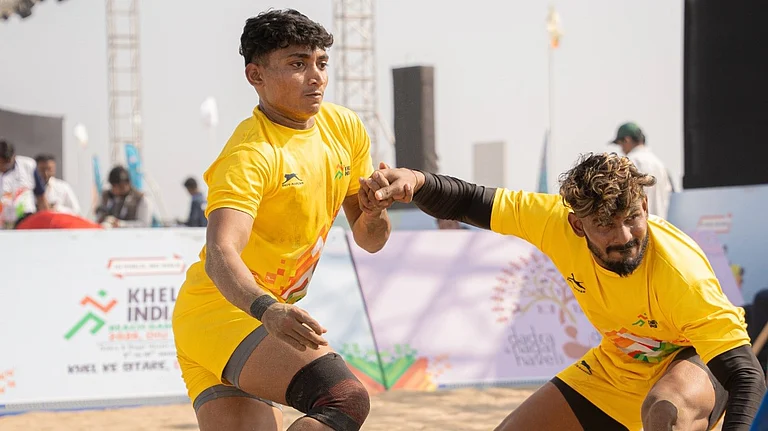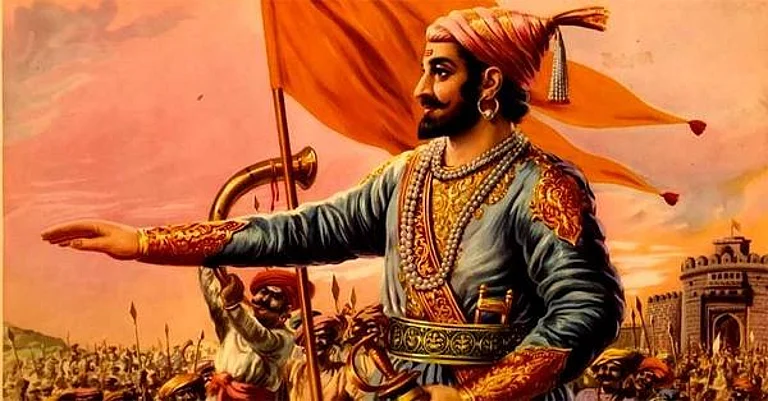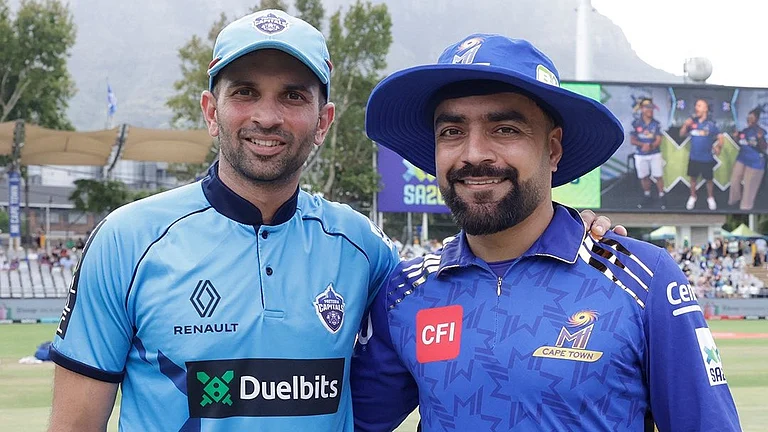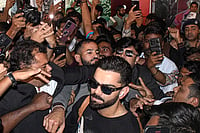A few weeks ago, I joined a packed theatre in Pune to watch Chhaava, the latest cinematic tribute to Chhatrapati Sambhaji Maharaj. The movie was so energetic that I watched it two times in a period of week. Vicky Kaushal’s portrayal of Sambhaji Maharaj is on fire—literally, there’s a flaming war scene—and the crowd’s screaming “Har Har Mahadev!” every now and then.
By the time this article gets published, this movie should have raked in more than Rs. 800 crore, and every other post on X is some fanboy calling it the ultimate Maratha flex. I’m pumped, I swear—I’m Maharashtrian; I grew up with these stories and the history of Shivaji Maharaj and Sambhaji Maharaj runs in my veins. But I’m also that annoying historian who can’t shut up about the “real stuff” and “where is the evidence”. Here’s the thing: Chhaava makes Sambhaji so larger-than-life that you can’t even whisper a “but” without someone glaring like you’ve insulted their entire khandan.
We Indians love our past served hot and cinematic. Mughal-e-Azam gave us palaces, Tanhaji gave us goosebumps, Bajirao Mastani gave us the love story to replace Romeo and Juliet, and now Chhaava, which dropped on February 14, 2025, gives us Sambhaji as a titan—Shivaji’s son, Swarajya’s shield, staring down Aurangzeb’s tyranny. He’s fierce, flawless; a king you’d follow into a furnace. But history’s not that clean and elegant, and I’ve got the chai stains on my notebooks to prove it. Sambhaji was real—messy, brilliant, human—and Chhaava skips the bits that don’t shine. He’s a warrior king defending his people against the ruthless Mughal emperor Aurangzeb, who sought to crush the Maratha spirit. The film’s Sambhaji is a lion—bold, righteous, and invincible until his tragic end. But as someone who’s spent years sifting through chronicles and arguing over facts with fellow history buffs, I can’t shake the feeling that this halo of perfection flattens a far richer tale.
A quick history lesson. Sambhaji, born in 1657 to Shivaji and Saibai, took over in 1681 after his dad passed. He ruled till 1689, and it was chaos—wars with the Mughals, the Siddis, the Portuguese, and even those Mysore Wadiyars who thought they could mess with him. He was a proud Hindu, standing tall against Aurangzeb, who was basically the 17th-century version of a tax-happy dictator burning through anyone who didn’t kneel. Sambhaji got caught in 1689, and what happened next still gives me chills—tortured for days, eyes gouged, body broken, all because he wouldn’t bend. He died at Tulapur, a martyr. That’s the Sambhaji Chhaava loves, and I get why.

The movie’s got these moments that make your chest swell—such as when Sambhaji raids Burhanpur in 1681, robbing the Mughals blind. Or the end, where he’s staring down Aurangzeb, bloodied but unbowed—I think I clapped too. But it’s all so… clean. What about the time he rebelled against his own dad? Yes, in 1678; he was 21, angry with Shivaji for keeping him on a tight leash. So he ran off to the Mughals—yes, the Mughals!—hanging with Diler Khan for a bit before coming back, tail between his legs. Some historians says it was just a young guy acting out, not betrayal. But in Chhaava? Not a peep. Guess a hero can’t look like he ever messed up.
And his reign wasn’t all victory parades. He was a beast on the battlefield—140 fights, zero losses, or so the stories go—but he could be brutal. In 1683, he went after the Portuguese in Goa because they were harassing Hindu pilgrims. Fair enough. But Cosme da Guarda wrote about Sambhaji’s men torching entire villages. Then there’s how he dealt with the Ashtapradhan Mandals—those who rebelled against him. He killed them because of the Kavi Kalash (supported by much historical evidence). Harsh, but that’s how you kept control back then. Chhaava doesn’t show that side completely.
The film’s Aurangzeb, played with icy menace by Akshaye Khanna, is a worthy foil—cruel, calculating, and obsessed with breaking Sambhaji. It’s a fair portrait of a ruler who razed temples and imposed crushing taxes to fund his wars. But Chhaava doesn’t linger on Sambhaji’s own strategic pragmatism. He allied with Golconda’s Qutb Shahi dynasty against Mysore, and even sheltered Aurangzeb’s rebel son Akbar to destabilise the Mughals. These moves reveal a shrewd leader, not just a sword-wielding icon. By sidelining them, the film trades complexity for a cleaner, crowd-pleasing saga.
This isn’t new. Indian historicals—Padmaavat, Bajirao Mastani—thrive on emotion, not nuance. They stir our pride; especially now, when tales of resistance feel urgent. But they come with a catch: when Sambhaji is a flawless demigod, questioning him feels like betrayal. After the screening I brought up his rebellion while chatting with a friend over chai. "Bhai, he’s our hero—why drag that up?" he snapped, brushing it off. Just to prove my point, I had to take an online course on Sambhaji Maharaj, for which I charged a certain amount as fees and got over 100 participants who were interested in listening to the real history of Sambhaji Maharaj. On X, fans hail Chhaava as truth, urging it into textbooks. I get it—Sambhaji’s courage is magnetic. But this adoration shuts down discussion. His real story, flaws and all, deserves better.
As a historian, I see history as a living thing—messy, human, and worth wrestling with but at the same time inspiring to the newer generations. Sambhaji wasn’t just a warrior; he penned Sanskrit poetry, rebuilt forts, and held court in three languages. His brief Mughal dalliance doesn’t erase his defiance; his harshness in Goa doesn’t undo his sacrifice. But Chhaava’s gloss turns him into a monument, not a man. This robs us of the chance to engage with him fully—to admire his grit while pondering his choices. My dada used to say, “Itihas humein sikhaata hai, par sochne ki jagah bhi chhodta hai” (History teaches us, but leaves room to think). Chhaava gives us the lesson, not the space.
Don’t get me wrong—cinema’s power is real. Chhaava has sparked pilgrimages to Vadhu Tulapur, Bahadurgad (called Dharmveergad by the locals) and fired up kids to learn about Swarajya and Sambhaji Maharaj. Posts online call it “a slap to Mughal ghosts,” and schools are screening it for inspiration. Vicky Kaushal’s Sambhaji is electric; the battles are raw and breathtaking. But with influence comes duty. When filmmakers airbrush the past, they don’t just shape how we see our heroes—they curb how we think about them.
I’m not asking for a dull lecture on celluloid—Bollywood’s magic lies in its drama, and Chhaava delivers that in buckets. Yet, as we cheer Sambhaji’s valour, let’s not forget he was mortal, not mythical. His true legacy—rebellions, ruthlessness, and redemption—holds more fire than any sanitised epic. Next time you watch Chhaava, revel in the roar but spare a thought for what’s unsaid. That’s where history breathes, and where Sambhaji Maharaj, the proud Hindu king who defied an empire, truly lives.
Views expressed are personal























